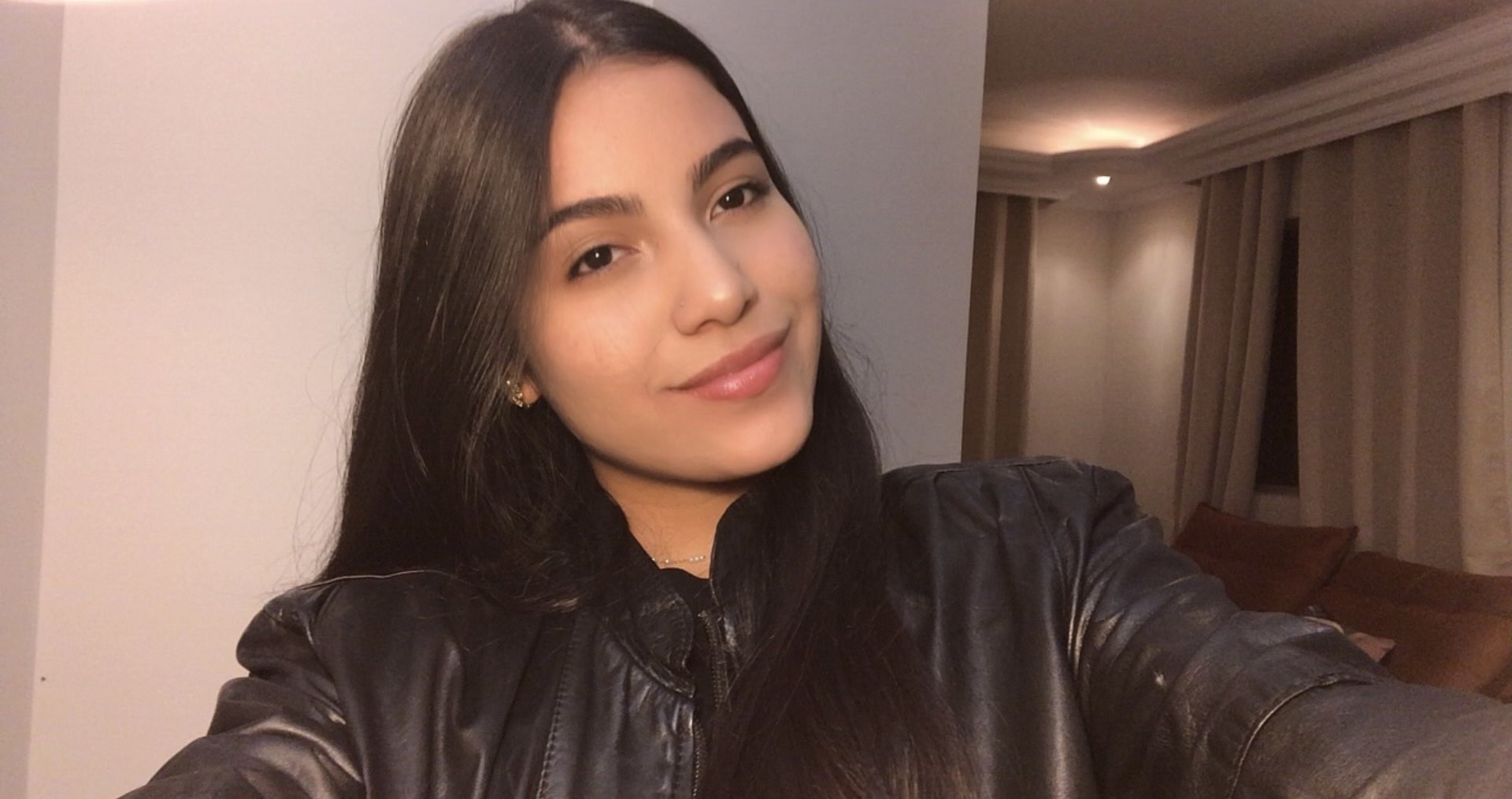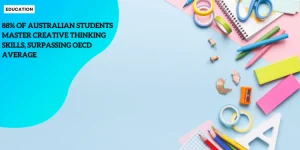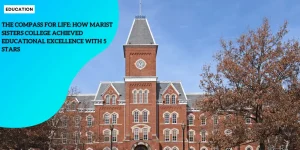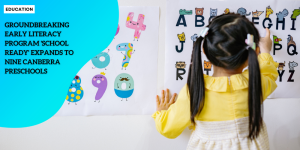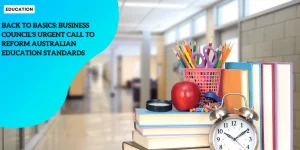Breaking Education Myths: Study Shows Creativity Drives Academic Excellence in Literacy and Math
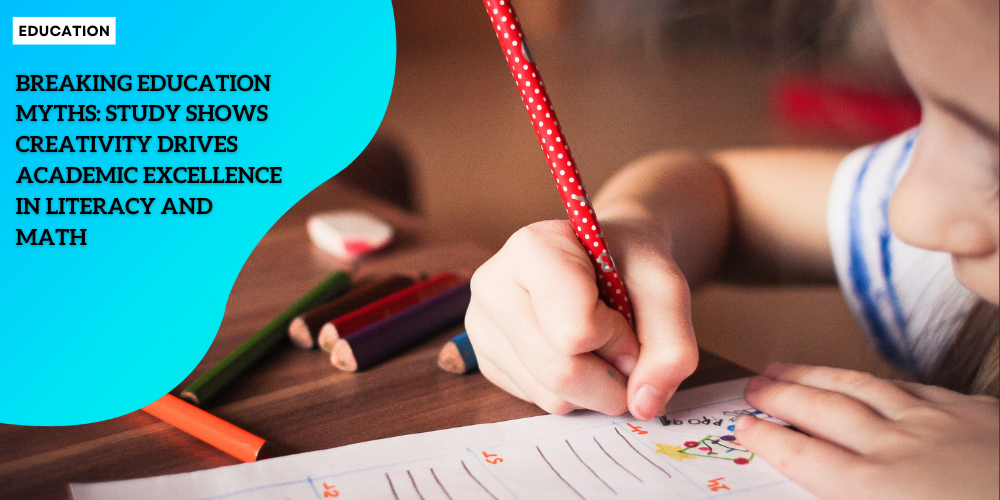
Anúncios
The Surprising Link Between Creativity and Academic Success
A groundbreaking study from the University of South Australia has shed light on the intriguing relationship between creativity and academic success.
Contrary to the widespread belief that academic achievement and creativity are mutually exclusive, the research suggests that creative thinking can significantly enhance student performance in literacy and numeracy assessments.
Anúncios
This chapter explores the findings of this study and its implications for modern education.
Creativity vs. Traditional Metrics
The study found that creativity is a stronger predictor of academic achievement than traditional metrics like Grade Point Average (GPA).
Anúncios
GPA, while important, primarily measures a student’s ability to perform well on standardized tests and complete assigned tasks effectively.
In contrast, creativity encompasses the ability to produce novel and task-appropriate solutions, which extends beyond mere rote learning.
Specifically, the research demonstrated that students who excelled academically also exhibited elevated levels of creative thinking.
This correlation challenges the common stereotype that creativity and academic performance are incompatible.
In fact, the study suggests that fostering creativity in students may lead to better academic outcomes across various subjects.
Evidence from Literacy and Numeracy
Flexibility in divergent thinking—an ability to generate multiple unique solutions to a problem—was shown to lead to improved literacy outcomes.
Students who were able to think flexibly and consider a range of perspectives were better at understanding and interpreting complex texts.
This skill is crucial in literacy, where comprehension and critical thinking play vital roles.
Mathematical creativity, on the other hand, was found to correlate with enhanced numeracy performance.
This form of creativity involves finding innovative ways to solve mathematical problems, recognizing patterns, and applying mathematical concepts in novel ways.
Such skills are highly beneficial in mathematics, where creative problem-solving can simplify complex equations and uncover multiple solutions.
Challenging Conventional Beliefs
These findings push back against the traditional belief that creativity has no place in academia.
The stereotype that schools suppress creativity is based on the idea that educational systems prioritize conformity and standardized testing over original thinking.
However, the study from the University of South Australia provides evidence that supports a different narrative.
Meta-analytic research has indicated positive correlations between creativity and academic success, suggesting that the two can coexist harmoniously.
When educational environments support creativity through interdisciplinary projects and flexible problem-solving tasks, students can thrive both creatively and academically.
Implications for Education
Understanding the link between creativity and academic success offers a compelling reason for educational institutions to rethink their teaching strategies.
Integrating creative thinking into the curriculum, especially in core subjects like literacy and numeracy, can empower students to excel academically.
Schools have the opportunity to adopt a more holistic approach, balancing traditional learning methods with the development of creative skills.
This shift can ultimately lead to improved student outcomes and better preparation for the complexities of the modern world.
Emphasizing creativity within structured academic settings allows students to harness their full potential, which is beneficial not just for academic achievement but also for lifelong learning and success.
Moving forward, educators can foster environments that support curiosity and open-mindedness, using interactive and diverse teaching methods to keep students engaged and motivated.
This approach aligns with the broader goals of education, aiming to nurture well-rounded individuals who can think critically and creatively.
The integration of creative thinking into educational strategies marks a pivotal step towards more effective teaching and learning practices.
It paves the way for an academic culture that values and cultivates creativity, ultimately leading to higher levels of student achievement and personal growth.
Understanding Creative Thinking in Education
Flexibility in Divergent Thinking and Literacy Outcomes
Research has uncovered fascinating insights into the relationship between creativity and higher academic performance, particularly in literacy.
Flexibility in divergent thinking—a student’s ability to generate multiple ideas across various categories—has been shown to significantly improve literacy outcomes.
For instance, when students are asked to imagine what would happen if people only told the truth, their capacity to consider numerous possible scenarios enriches their creative thinking.
This flexibility allows them to tackle reading and writing tasks with a more expansive perspective, improving comprehension and expressive skills.
This approach to learning encourages students to think more broadly and consider multiple angles, making them better equipped to interpret complex texts and express their thoughts effectively.
It challenges the traditional focus on rote memorization and standardized testing by integrating creative problem-solving into language-based tasks.
Mathematical Creativity and Numeracy Performance
Creativity is not limited to the arts or language; it also plays a crucial role in mathematics.
Mathematical creativity involves finding novel solutions, recognizing alternative problem-solving methods, and thinking beyond conventional approaches.
For example, students who explore different ways to make the number eight demonstrate higher mathematical creativity, which correlates with better numeracy performance.
Mathematical creativity fosters an environment where students are not just following formulas but are actively engaging with the subject matter.
This kind of engagement helps them understand underlying mathematical concepts more deeply and apply their knowledge to a variety of problems, enhancing their overall numeracy skills.
Balancing Novelty and Task-Appropriate Solutions
Creativity in education is not just about coming up with novel ideas; it also involves generating solutions that are appropriate and useful for the task at hand.
This balance between originality and practicality is essential in educational contexts.
For instance, a creatively written story needs to be engaging (novel) and coherent (task-appropriate).
Teachers play a pivotal role in fostering this balance by encouraging students to embrace their creative impulses while guiding them to meet academic standards.
This dual approach helps students develop both their creative and analytical skills, making them well-rounded learners capable of excelling in various subjects.
The Challenge of Integrating Creativity in Traditional Education
One common misconception is that creativity and academic achievement are incompatible, with schools often emphasizing conformist learning methods.
However, research contradicts this belief by showing that creativity can be seamlessly integrated into structured learning environments to enhance academic performance.
The key is to create a learning atmosphere that values both creative and academic skills, giving equal importance to innovative thinking and traditional metrics like GPA.
Educators are finding unique ways to spark curiosity and creativity among students, whether through open-ended projects, interdisciplinary problem-solving tasks, or interactive role-playing activities.
These strategies demonstrate that fostering creativity does not detract from academic rigor but instead complements and enhances it.
Encouraging creativity within the educational framework offers significant benefits, leading to improved literacy and numeracy outcomes.
This research underscores the importance of adopting a more holistic approach to teaching that values creative thinking alongside traditional academic achievements.
The Role of Personality and Risk-Taking
Understanding how personality traits and risk-taking behaviors interact with creativity in influencing academic success sheds light on the diverse ways students achieve excellence.
Let’s delve deeper into the link between personality, creativity, and academic performance.
Traits Influencing Creativity and Academics
Research has identified conscientiousness and openness to experience as two pivotal traits that impact both creativity and academic achievement.
Conscientiousness reflects how diligent, responsible, and organized a student is.
These traits typically translate into higher GPA scores and better academic outcomes.
Conscientious students are often well-prepared, adhere to deadlines, and excel in structured tasks.
However, their attention to detail and methodical approach also provide a foundation for creative endeavors, particularly when executing complex projects that require both innovation and meticulous execution.
Openness to experience, on the other hand, highlights a student’s curiosity, willingness to explore new ideas, and intellectual engagement.
This trait is often closely linked to creativity as it involves thinking beyond conventional boundaries.
Open students tend to embrace novel concepts and are more flexible in their thinking, which enhances both their creative potential and their capacity to perform well in subjects that require critical thinking and problem-solving skills.
Intellectual Risk-Taking and Academic Domains
Intellectual risk-taking (IRT) is another crucial factor that influences creativity and academic performance.
IRT involves the willingness to engage in uncertain or challenging intellectual activities, embracing the possibility of mistakes for the sake of learning and growth.
High levels of IRT are commonly associated with enhanced creativity, as students are more likely to experiment with unconventional ideas and solutions.
However, the benefits of IRT vary between academic domains.
In literacy, higher IRT tends to correlate with improved performance.
This is because literacy tasks often involve interpreting texts, crafting arguments, and creative writing, all of which benefit from a willingness to take intellectual risks.
Conversely, in mathematics, the relationship is more nuanced.
While mathematical creativity is important, successful performance often requires precision and adherence to established problem-solving techniques.
Thus, while some degree of IRT is beneficial, excessive risk-taking without regard for accuracy can hinder performance in numeracy.
The Unique Interaction of Personality Traits
Different personality traits interact uniquely with creative thinking and academic achievement.
For example:
- 📚Extraversion can have mixed effects. While it encourages a lively and engaging learning attitude, it may also lead to distractions that can detract from academic performance.
- 📚Agreeableness generally supports academic success by fostering positive relationships with peers and teachers, but its connection to creativity is less direct, as creative tasks often benefit more from traits like openness and intellectual risk-taking rather than conformity.
Overall, the dynamic interplay between these traits suggests that no single personality profile guarantees academic success or creativity.
Instead, the combination of traits and the degree of IRT adopted by each student can lead to various pathways for excelling in school.
Looking ahead, it’s clear that understanding the role of personality and risk-taking can further inform teaching strategies.
Schools can harness these insights to create environments that nurture both creativity and academic excellence.
Implications for Modern Education
Integrating Creative Thinking into Teaching Strategies
Schools have long focused on traditional metrics like GPA to gauge academic success.
However, recent research underscores the importance of creativity in achieving literacy and numeracy excellence.
It’s crucial for educators to integrate creative thinking into their teaching strategies, especially in key areas like literacy and numeracy.
- 📚Literacy: Encouraging flexibility in divergent thinking can lead to improved literacy outcomes. For example, tasks that prompt students to think about multiple perspectives and explore a variety of ideas, such as creative writing assignments or open-ended reading questions, can significantly enhance their comprehension and critical thinking skills.
- 📚Numeracy: Mathematical creativity, which involves finding novel solutions and exploring various problem-solving methods, is equally important. Incorporating activities that challenge students to think outside conventional problem-solving strategies can foster deeper understanding and proficiency in mathematics.
These approaches don’t just complement traditional academic skills—they enhance them.
By fostering an environment where students feel free to express their creativity, teachers can help students achieve a more rounded and effective education.
Balancing Traditional Learning Methods with Creative Skill Development
Balancing traditional learning with creative skill development is key to modern education.
While structured learning provides the foundation of knowledge, creative skill development helps students apply that knowledge in innovative ways.
| Method | Description |
|---|---|
| 🎭 Structured Lessons | Begin with a solid foundation by teaching the core principles of a subject through structured lessons. |
| 🎭 Creative Projects | Follow up with projects that encourage students to apply these principles creatively. For instance, after a unit on fractions, students could design a project that uses fractions in a real-world scenario, like baking or budgeting. |
| 🎭 Interactive Methods | Use interactive teaching methods such as role-plays, debates, and group projects. These approaches not only make learning more engaging but also help students develop critical thinking and creativity. |
| Approach | Description |
|---|---|
| 🎨Structured Lessons | Begin with a solid foundation by teaching the core principles of a subject through structured lessons. |
| 🎨Creative Projects | Follow up with projects that encourage students to apply these principles creatively. For example, after a unit on fractions, students could design a project that uses fractions in real-world scenarios, like baking or budgeting. |
| 🎨Interactive Methods | Use interactive teaching methods such as role-plays, debates, and group projects. These approaches make learning more engaging and help students develop critical thinking and creativity. |
Critically, it’s about finding a balance—that sweet spot where traditional and creative methods intersect to deliver a richer educational experience.
Implementing Creative Approaches in Structured Learning Environments
Contrary to the belief that creativity and structured environments are mutually exclusive, creative approaches can indeed thrive within structured learning. The key lies in how these methods are implemented.
- 📚Problem-Based Learning: Introduce problem-based learning where students solve real-world problems through creative thinking. This method helps students see the relevance of their studies and encourages them to think critically.
- 📚Collaborative Work: Encourage collaborative work to foster creativity. When students work together, they are exposed to diverse perspectives and must think creatively to resolve differences and combine ideas.
- 📚Technology Integration: Utilize technology to enhance creative learning. Digital tools like educational software and online collaborative platforms can provide interactive and innovative avenues for learning.
By thoughtfully incorporating creative methods into structured settings, educators can enhance both creativity and academic performance.
As we move forward, it’s essential to understand that fostering creativity isn’t about replacing traditional methods but augmenting them to develop well-rounded, innovative thinkers ready to tackle the complexities of tomorrow.
Moving Forward: Recommendations for Educators
Encourage Open and Inquisitive Attitudes Towards New Ideas
In creating environments that foster both academic excellence and creativity, it’s essential for educators to support open and inquisitive attitudes towards new ideas in classrooms.
This means cultivating a culture where curiosity is welcomed and students feel safe to ask questions, think critically, and explore diverse perspectives.
Simple actions, like incorporating open-ended questions and encouraging debates, can stimulate students’ creativity and engagement.
For instance, posing questions such as, “What would happen if people only told the truth?” can spur divergent thinking and encourage students to consider multiple viewpoints.
Implement Interactive and Diverse Teaching Methods
Diverse and interactive teaching methods are key to sparking curiosity and maintaining student engagement.
Techniques such as problem-based learning, collaborative projects, and the use of technology can create dynamic and flexible learning environments.
Engaging students in hands-on activities, role-playing, and interactive simulations can make learning more relevant and enjoyable.
For example, role-playing scenarios or using gamified learning platforms can deepen students’ understanding and retention of subject matter by connecting theoretical knowledge with practical application.
Additionally, integrating creative arts into subjects like mathematics and literacy can enhance students’ learning experiences.
Activities such as sketching, storytelling, and music can help students grasp complex concepts in a more intuitive and enjoyable manner.
This approach not only improves academic performance but also nurtures students’ creative abilities, making learning a holistic and enriching experience.
Foster Environments That Support Both Academic Excellence and Creative Expression
To balance traditional academic rigor with creative expression, educators should design curricula that allow flexibility and freedom for students to explore their interests.
Schools can create designated time for creative projects, encourage students to pursue passion projects, and provide opportunities for self-directed learning.
This fosters a sense of ownership and intrinsic motivation towards learning, ultimately leading to better academic outcomes.
Moreover, it’s crucial to create a supportive atmosphere where students feel confident to take intellectual risks without fear of failure.
Celebrating creative efforts and showing appreciation for unconventional ideas can significantly boost students’ confidence and willingness to experiment.
For instance, incorporating a “failure-friendly” policy where mistakes are viewed as opportunities for growth can reduce the pressure of perfection and encourage students to think outside the box.
Developing this balanced approach will require ongoing professional development for teachers.
Training programs focused on innovative teaching strategies, creativity assessment, and personalized learning can equip educators with the tools needed to cultivate both academic and creative skills in their students.
In conclusion, creating a classroom environment that encourages inquisitive thinking, implements diverse teaching methods, and supports creative expression can significantly benefit students’ academic and overall growth.
By integrating these strategies, educators can help students excel academically while nurturing their creative potential, ultimately leading to a more engaging and effective educational experience.
For more news like this, visit:
Transform Teacher Wellbeing: New Professional Learning Series Sets Global Standard
